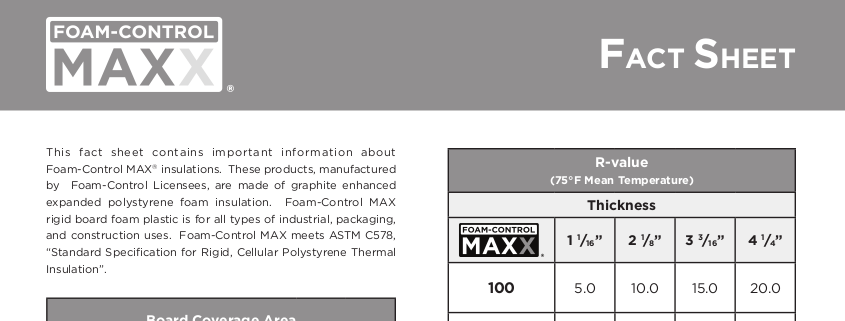A Comprehensive Guide to Applying Foam Control Solutions in Your Procedures
Reliable foam control is an important element of functional performance that commonly goes forgotten. Comprehending the details of foam generation can substantially affect both productivity and item quality. By taking a look at key aspects such as application compatibility and personnel training, organizations can optimize their foam monitoring initiatives.
Comprehending Foam Difficulties
Foam challenges are a considerable concern throughout numerous sectors, influencing operational efficiency and product top quality. The formation of excessive foam can prevent processes such as mixing, transport, and storage, leading to boosted downtime and waste. In sectors like food and drink, drugs, and petrochemicals, foam can hinder production lines, triggering product variances and contamination dangers.
Additionally, foam can obstruct equipment capability, leading to pricey repair work and maintenance. In wastewater treatment, foam can interfere with clarifier procedures, resulting in lower treatment efficiency and regulatory compliance problems.
Understanding the underlying root causes of foam generation is critical for reliable administration. Factors such as surfactants, temperature fluctuations, and agitation degrees can all add to foam production. Recognizing these elements permits markets to execute targeted techniques that minimize foam development while maintaining item honesty.
Kinds Of Foam Control Solutions

Mechanical options entail the use of tools such as foam skimmers or defoamers. These tools literally remove foam from the surface of fluids, consequently stopping overflow and preserving optimum degrees in activators and tanks. Chemical solutions, on the other hand, consist of the application of defoaming agents-- compounds that disrupt the foam structure, causing its collapse. These representatives can be silicone-based, natural, or aqueous, each offering distinct benefits relying on the application environment.
Last but not least, operational methods concentrate on process modifications. This might entail modifying tools specifications, such as temperature and stress, or transforming the circulation prices of liquids to decrease foam generation. Moreover, applying excellent housekeeping methods can likewise reduce foam formation by reducing contaminants that add to foam security.
Choosing the appropriate foam control remedy entails examining the particular needs of the procedure, consisting of the kind of procedure, the attributes of the products included, and safety factors to consider.
Choosing the Right Products
Picking the best foam control items requires a thorough understanding of the particular application and its special challenges. Elements such as the sort of foam, the environment in which it happens, and the wanted outcome all play critical roles in product choice. Foam Control. For example, in markets like food processing, it is important to select food-grade defoamers that follow safety policies while efficiently managing foam.
In addition, consider the thickness of the liquid where the foam trouble exists. Some items are formulated for low-viscosity applications, while others are customized for thicker fluids. Compatibility with existing procedures is an additional important element; the selected foam control agents ought to incorporate perfectly without disrupting overall procedures.
An additional crucial aspect is the technique of application. Some products informative post might call for dilution, while others can be applied directly. Examining the simplicity of usage and the called for dosage can offer insights right into the item's performance and cost-effectiveness.
Implementation Methods
Effective application techniques for foam control remedies need a systematic strategy that straightens product choice with operational needs. The initial step involves a comprehensive evaluation of the processes where foam occurs, identifying specific areas that necessitate treatment. By involving cross-functional groups, including design, manufacturing, and high quality assurance, organizations can collect insights that inform the option of one of the most effective foam control products.
Next, it is important to establish clear purposes for foam decrease, making sure that these goals are achievable and quantifiable. This may involve defining acceptable foam levels and the timelines for implementation. Educating workers on the residential or commercial properties and application approaches try this website of picked foam control agents is just as crucial, as proper use is vital for optimum results.
Additionally, integrating foam control options right into existing operations calls for mindful planning. Eventually, a well-structured approach will certainly enhance operational effectiveness while effectively managing foam-related difficulties.
Monitoring and Evaluating Performance
Monitoring and evaluating the performance of foam control services is important for ensuring that executed strategies produce the preferred outcomes. This procedure includes organized data collection and analysis to examine the efficiency of foam control representatives and methods. Trick efficiency indicators (KPIs) should be developed prior to implementation, permitting a clear standard versus which to gauge development.

Evaluating effectiveness also requires periodic testimonials of foam control procedures and representative effectiveness. This can be achieved with tasting and screening, allowing drivers to determine if current solutions are meeting functional demands. Furthermore, it is essential to solicit feedback from employee that connect with these systems daily, as their understandings can expose operational nuances that measurable information might overlook.

Inevitably, an organized monitoring and analysis framework helps identify necessary adjustments, ensuring that foam control solutions continue to be efficient, affordable, and lined up with organizational goals.
Final Thought
In final thought, effective foam control remedies are important for enhancing operational effectiveness and keeping product high quality. A comprehensive understanding of foam obstacles, incorporated with the selection of appropriate items and implementation techniques, helps with the successful monitoring of foam generation. Extra resources Spending and establishing measurable kpis in employees training further enhance the efficiency of foam control measures. Normal surveillance and examination make certain continual enhancement, ultimately leading to an extra productive and structured operational setting.
Implementing excellent housekeeping methods can likewise minimize foam formation by reducing impurities that contribute to foam security.
Choosing the right foam control items requires a complete understanding of the specific application and its distinct obstacles (Foam Control).Effective implementation techniques for foam control options require a methodical approach that straightens item choice with functional demands.In conclusion, reliable foam control options are essential for maximizing functional efficiency and preserving item high quality. A complete understanding of foam challenges, integrated with the selection of suitable products and implementation approaches, assists in the effective administration of foam generation